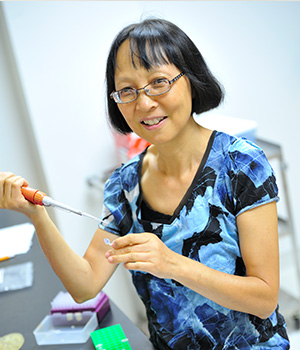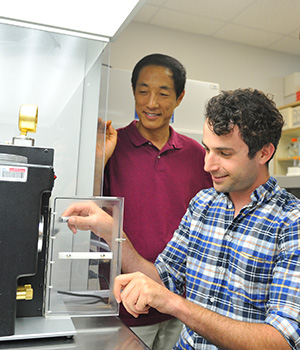Xing-Hai Zhang
Education
- Ph.D., University of Calgary, Canada, 1994
Research Interests
- Photosynthesis and carbon dioxide effects
- Plant molecular biology and biotechnology
- Molecular ecology and genetics of invasive plants
- Detection and treatment of citrus greening disease
Research Description
(1) Investigation of Rubisco biogenesis and functionality. Genetic engineering of more active Rubisco in crops and trees to sequester more carbon dioxide (CO2) to biomass
(2) DNA-based biotechnology to generate value-added plants that produce medicines and more nutrients, or become more tolerate to environmental stresses such as drought
(3) Application of CRISPR technology for more precise gene editing and targeted metabolic engineering for new traits in plants
(4) Application of nanotechnology for more efficient delivery of DNA, RNA or proteins to plant cells
(5) Molecular ecology study of genetic variation and mechanisms for invasive plants and habitat shift in the Florida Everglades wetland
(6) Detection and monitor of the citrus green disease causing bacterium CLas
Recent Publications
- Kirke J, Kaplan N, Velez S, Jin X-L, Vichyavichien P, Zhang X-H. (2018). Tissue-preferential activity and induction of the pepper capsaicin synthase PUN1 promoter by wounding, heat and metabolic pathway precursor in tobacco and tomato plants. Molecular Biotechnology, 60: 194–202.
- Ibrahim A, Jin X-L, Zhang Y-B, Cruz J, Vichyavichien P, Esiobu N, Zhang X-H. (2017). Tobacco plants expressing the maize nitrate transporter ZmNrt2.1 exhibit altered responses of growth and gene expression to nitrate and calcium. Botanical Studies, 58: 51.
- Hill W., Jin X.-L., Zhang X.-H. (2016). Expression of an arctic chickweed dehydrin, CarDHN, enhances tolerance to abiotic stress in tobacco plants. Plant Growth Regulation, 80: 323–334.
-
Zhang X.-H., Brotherton J.E., Widholm J.M. (2015). Co-expression of the tobacco anthranilate synthase b subunit with its feedback-insensitive a subunit as a selectable marker that also markedly increases the free tryptophan content. In Vitro Cellular and Developmental Biology–Plant, 51:564–570.




